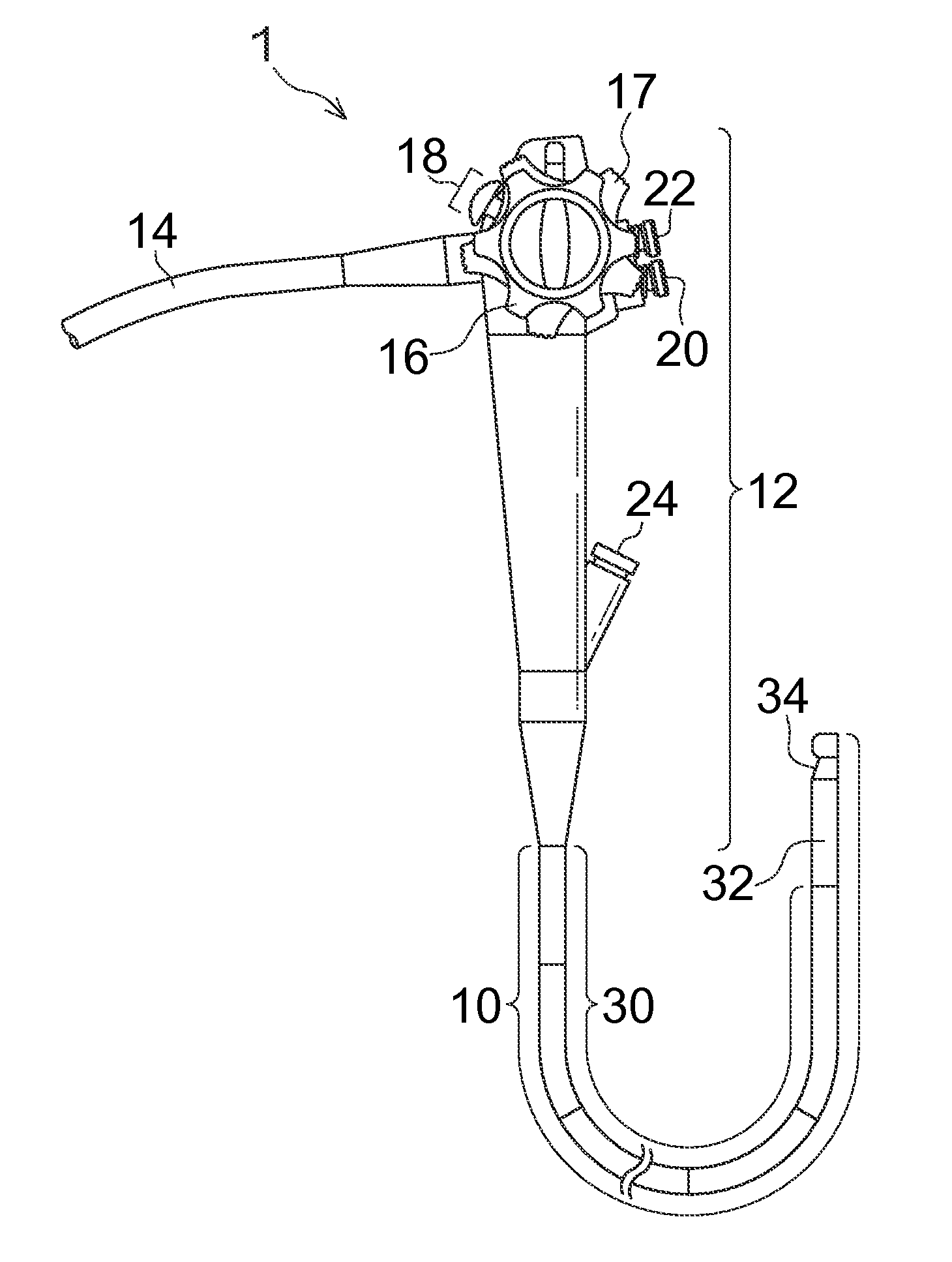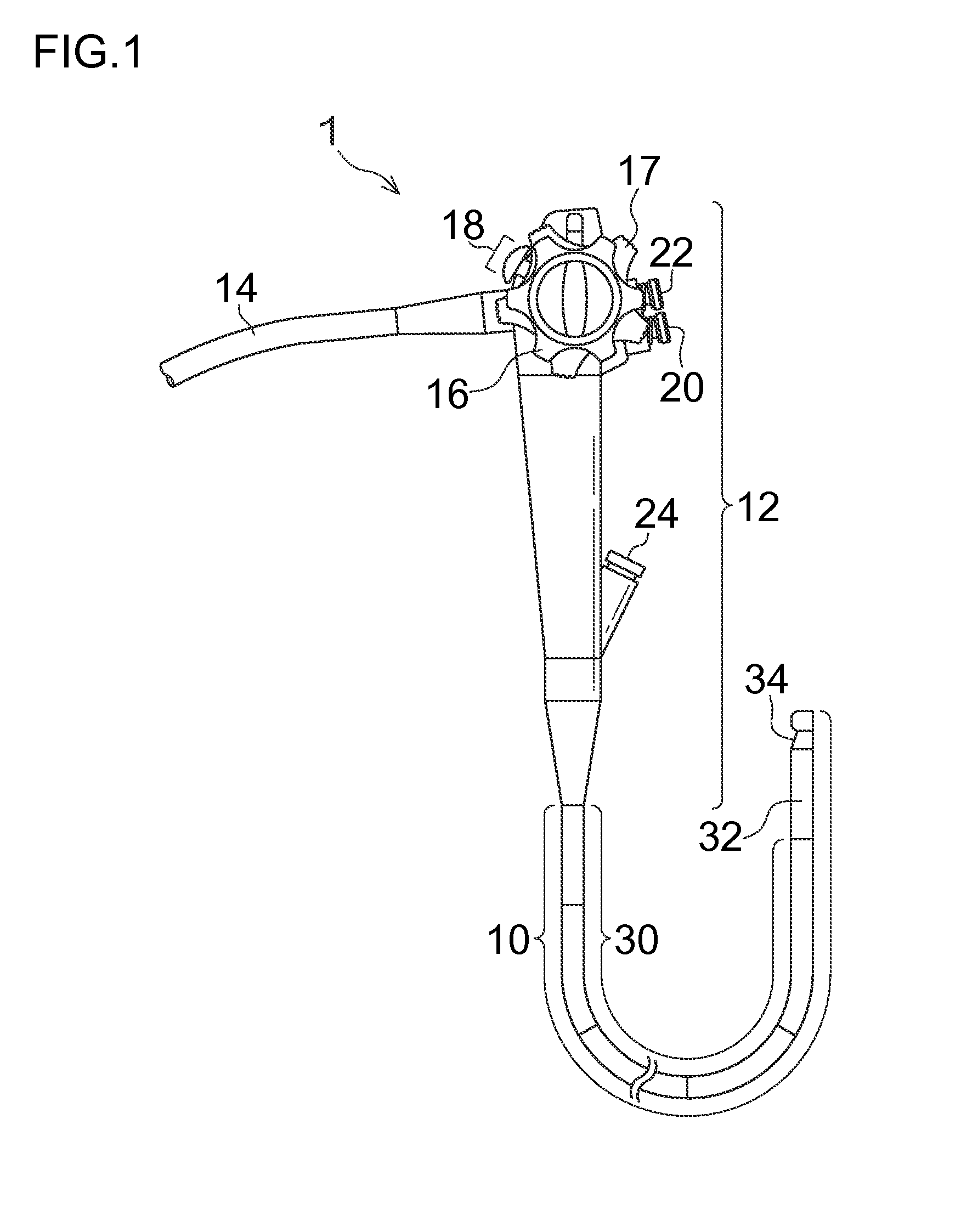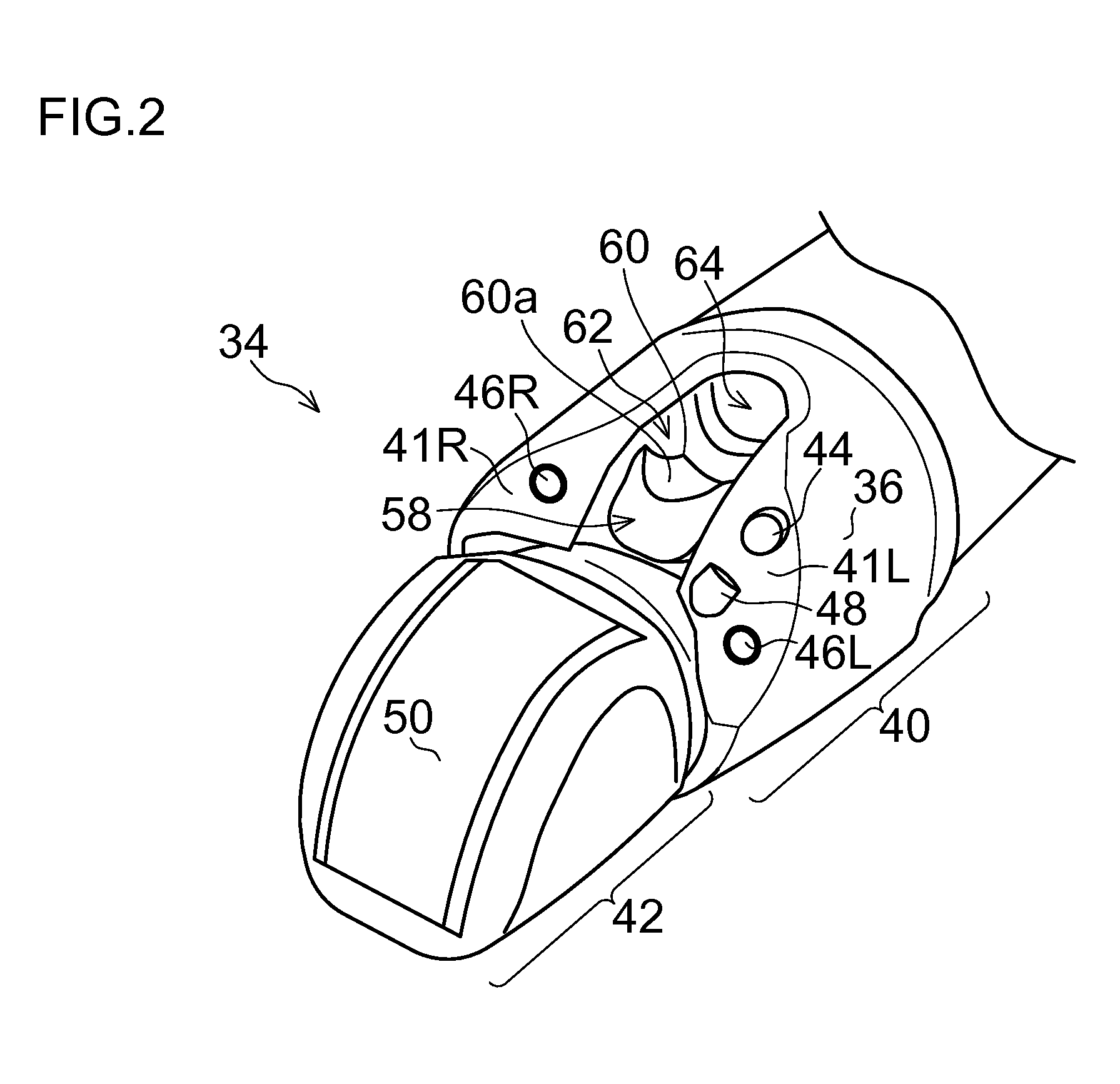Hood for ultrasonic endoscope and ultrasonic endoscope
a technology of ultrasonic endoscopy and hood, which is applied in the field of hoods for ultrasonic endoscopy and ultrasonic endoscopy devices, can solve the problems of loss of visibility from observation windows, inability to obtain image inside tissue, and reflected ultrasonic waves at the gap
- Summary
- Abstract
- Description
- Claims
- Application Information
AI Technical Summary
Benefits of technology
Problems solved by technology
Method used
Image
Examples
first embodiment
[0075]FIG. 3 illustrates the distal end part 34 of the endoscope 1 and a hood for an ultrasonic endoscope 100 (hereinafter simply called a hood 100) in a first embodiment, and is a perspective view illustrating a state where the hood 100 is detached from the distal end part 34. FIG. 4 is a perspective view illustrating a state where the hood 100 is attached to the distal end part 34.
[0076]The hood 100 illustrated in these figures includes: a hood body 102 which is formed in a cylindrical shape by a frame member and an elastic material such as, for example, silicone rubber or fluorocarbon rubber; and a notch 108 extending from a distal end to a proximal end side. However, the hood 100 may be not necessarily transparent.
[0077]An inner circumference surface of the hood body 102 has approximately the same diameter as the cylindrical outer circumference surface 36 of the distal end part 34, the hood body 102 fits onto the outer circumference surface 36 of the distal end part 34 as in FIG...
second embodiment
[0086]Next, a hood for an ultrasonic endoscope 150 (hereinafter simply called a hood 150) in a second embodiment will be explained.
[0087]FIG. 8 is a perspective view illustrating the hood 150 in the second embodiment. Additionally, the same part as or a similar function part to the hood 100 in the first embodiment is given the same reference numeral and its explanation will be omitted.
[0088]As illustrated in the figure, in the hood 150 in the second embodiment, at least the eaves-shaped part 106 is composed of a frame member 152, and the frame member 152 at the eaves-shaped part 106 protrudes toward in front of the observation window 44 in a state of the hood 150 (hood body 102) being attached to the distal end part 34.
[0089]According to the hood 150 in the second embodiment, in the same manner as the hood 100 in the first embodiment, when the ultrasonic transmitting and receiving plane of the ultrasonic transducer 50 is brought into close contact with a body wall, the frame member ...
third embodiment
[0091]Next, a hood for an ultrasonic endoscope 200 (hereinafter simply called a hood 200) in a third embodiment will be explained.
[0092]FIG. 10 is a perspective view illustrating the hood 200 in the third embodiment. Additionally, the same part as or a similar function part to the hood 100 in the first embodiment is given the same reference numeral and its explanation will be omitted.
[0093]As illustrated in the figure, in the hood 200 in the third embodiment, the eaves-shaped part 106 is given a habit (reformed) into a state where the eaves-shaped part 106 deforms toward a radially outside relative to an axis of the hood body 102.
[0094]On the other hand, as a switching device, one end of a string member 202 is coupled with the inner circumference surface or the like of the eaves-shaped part 106, and the other end of the string member 202 is led out from, for example, the treatment instrument introduction port 24 of the operation part 12 via the treatment instrument insertion channel...
PUM
 Login to View More
Login to View More Abstract
Description
Claims
Application Information
 Login to View More
Login to View More - R&D
- Intellectual Property
- Life Sciences
- Materials
- Tech Scout
- Unparalleled Data Quality
- Higher Quality Content
- 60% Fewer Hallucinations
Browse by: Latest US Patents, China's latest patents, Technical Efficacy Thesaurus, Application Domain, Technology Topic, Popular Technical Reports.
© 2025 PatSnap. All rights reserved.Legal|Privacy policy|Modern Slavery Act Transparency Statement|Sitemap|About US| Contact US: help@patsnap.com



